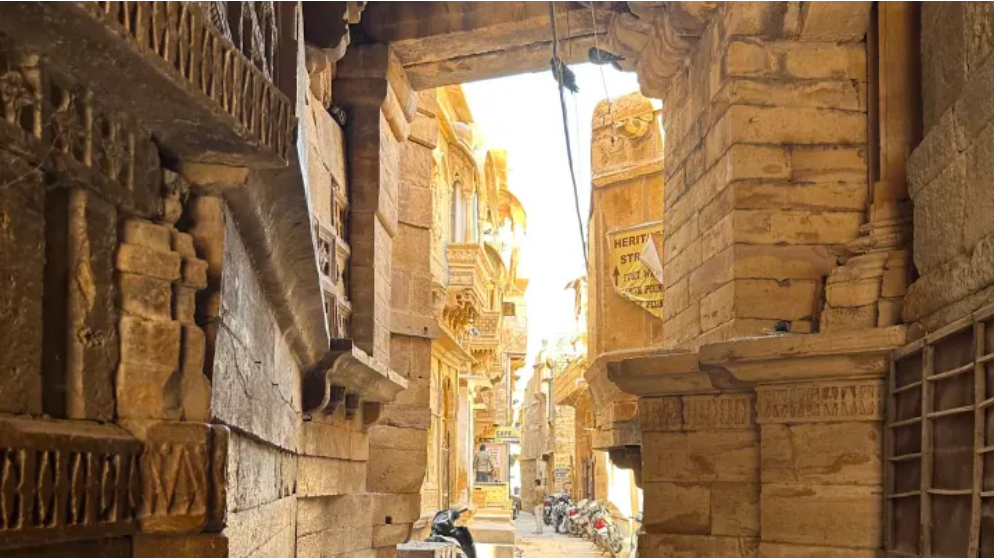The city of Jaisalmer is in the desert of Rajasthan, India, near the Pakistan border. Jaisalmer Fort is a UNESCO World Heritage Site where thousands of people live and hundreds of thousands of tourists visit each year.
 King Rawal Jaisal built the fabled fort in 1156. With exterior walls that span some 1,500 feet, the space inside is vast, with living quarters for people, and their families, who originally served the city’s royal court. Centuries later, the fort is still home to the descendants of those families.
King Rawal Jaisal built the fabled fort in 1156. With exterior walls that span some 1,500 feet, the space inside is vast, with living quarters for people, and their families, who originally served the city’s royal court. Centuries later, the fort is still home to the descendants of those families.
The fort has a tumultuous history, from its glorious days as a major city on the Silk Road to enduring plunder and conquests by foreign invaders and more recent conflicts with Pakistan.
 Jaisalmer Fort boasts a royal palace as well as public temples, shops, hotels, cafes and homes. It is a neighborhood, a business district, and a place of worship for a significant portion of Jaisalmer’s population, which lives within its crumbling walls. The fort’s population has increased several fold, leading to an increased load on infrastructure. Old sewage lines and improper drainage have caused water to seep into the foundation, and when one stone falls, it can bring down several others.
Jaisalmer Fort boasts a royal palace as well as public temples, shops, hotels, cafes and homes. It is a neighborhood, a business district, and a place of worship for a significant portion of Jaisalmer’s population, which lives within its crumbling walls. The fort’s population has increased several fold, leading to an increased load on infrastructure. Old sewage lines and improper drainage have caused water to seep into the foundation, and when one stone falls, it can bring down several others.
 The Indian National Trust for Art and Cultural Heritage works to maintain the fort but much remains to be accomplished. Although the government has allotted land surrounding the fort to the residents in the town, they prefer to live within. Families are expanding their homes, adding new levels and building higher than previous generations. But the original foundation may be unable to withstand the weight. Additionally, artisans proficient in ancient construction techniques, skilled at working with lime plaster and hand-carved stone, are difficult to find now.
The Indian National Trust for Art and Cultural Heritage works to maintain the fort but much remains to be accomplished. Although the government has allotted land surrounding the fort to the residents in the town, they prefer to live within. Families are expanding their homes, adding new levels and building higher than previous generations. But the original foundation may be unable to withstand the weight. Additionally, artisans proficient in ancient construction techniques, skilled at working with lime plaster and hand-carved stone, are difficult to find now.
 The current King of Jaisalmer whose family owns 60% of the fort, said more locals are needed to help restore it, which would reduce reliance on outside help. With the assistance of the state government, plans to establish regulations for the construction and expansion of the fort are underway, he said. “This fort has remained frozen in time, and our goal is to keep it for future generations to see as it once was.”
The current King of Jaisalmer whose family owns 60% of the fort, said more locals are needed to help restore it, which would reduce reliance on outside help. With the assistance of the state government, plans to establish regulations for the construction and expansion of the fort are underway, he said. “This fort has remained frozen in time, and our goal is to keep it for future generations to see as it once was.”
You can read the original article at www.cnbc.com

